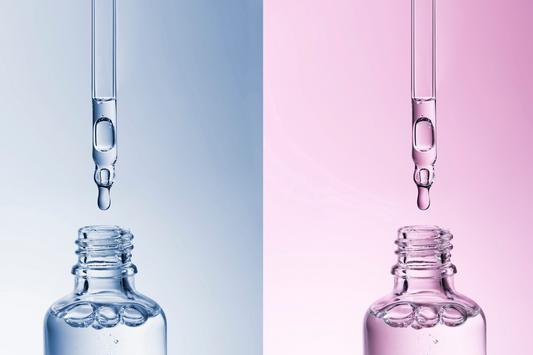If you’ve ever talked to your health care provider or dermatologist about hair thinning or hair loss, you’ve most likely heard about the two solutions currently on the market: Minoxidil and Finasteride. While Minoxidil is the current market leader, what are the differences between the two?
Keep reading - we’ll help you understand the facts behind Finasteride and our take on it.
Finasteride: The Timeline
History
The origins of Finasteride date back to 1942 and had to do with scientists realizing that prepubertal castration prevented later development of male pattern baldness. Almost 30 years later, another scientist, Julianne Imperato-McGinley from Cornell Medical College, accidentally discovered that this may have been caused by lowered levels of a male hormone called dihydrotestosterone or DHT.
Imperato-McGinley realized that boys with a mutated gene that caused lowered levels of DHT did not have issues with male pattern baldness when they grew up. Julianne also found that lack of DHT resulted in smaller prostates. This is key because the following year, P. Roy Vagelos developed a drug to disrupt the DHT pathway. Finally, developed under the code name MK-906, Finasteride was approved by the FDA in 1992 for treatment of BPH (an ailment attributed to an enlarged prostate) and then later in 1997 to treat male pattern baldness.
Finasteride Today
Finasteride has been heavily focused on the male population and is not currently a solution for female pattern hair loss. There is some research for use of Finasteride for females, but due to its strong potential of birth defects, research has been limited, and at best, inconclusive.
Finasteride, also known under the brand names Proscar or Propecia, is an FDA approved drug used to treat male pattern baldness. It’s important to note that women and children specifically should NOT use the drug.
The drug itself is only available in a tablet form and should be taken once daily, around the same time each day. As this drug is prescribed by a doctor or pharmacist, follow the directions on the label for safety and efficacy precautions. For male pattern baldness, the drug should take 3+ months to take effect and growth will happen slowly over time. If the drug is a successful solution, expect to see results within 12 months – if not, further treatment is unlikely to help. Once you stop taking the drug, hair loss will resume, but more importantly should not be done without talking to a doctor first.

How it Works
Finasteride primarily works by targeting a hormone pathway and reducing the amount of DHT hormone formed – specifically in tissues like the scalp or near the head. A byproduct of testosterone production, DHT can bind to hair follicle receptors and cause them to shrink. DHT is one of the hormones that is most responsible for starting the hair loss process.
Finasteride acts as a hormone blocker to DHT while maintaining original testosterone levels. Finasteride prevents that entire pathway from happening, resulting in reduced hair loss and more hair growth.
Side Effects/Challenges
Despite relieving hair loss and even promoting hair growth, Finasteride comes with a handful of undesired side effects. The most immediate one is that it’s a solution available only for men and not women. Even for men, Finasteride causes decreased sex drive, increase in breast size and tenderness, as well as even skin rashes. In worse cases, it can even cause swelling of lips, tongue, throat, depression, and lumps to form in the breasts. The many challenges with the Finasteride itself is that it will most likely pose more challenges than benefits.
Like Minoxidil, Finasteride was discovered accidentally and for a purpose completely different than for treating hair loss. This means that the drug’s side effects and someone finding a better version of the drug without the side effects is highly unlikely.
At Revela, we dedicate our time and use of technology to help find and optimize new ingredient(s) to help with supporting the appearance of thicker, fuller looking hair – and dedicated solely to resolve this challenge. This means being unbiased in our approach and exploring completely novel ways of targeting hair loss. Not a DHT or hormone pathway from the 1970s, but a product with real, targeted results. We’re excited to bring this technology to you through the Revela Hair Revival Serum. Our ultra-lightweight, concentrated formula is not only effective for visible results, but free of hormones and toxins.





